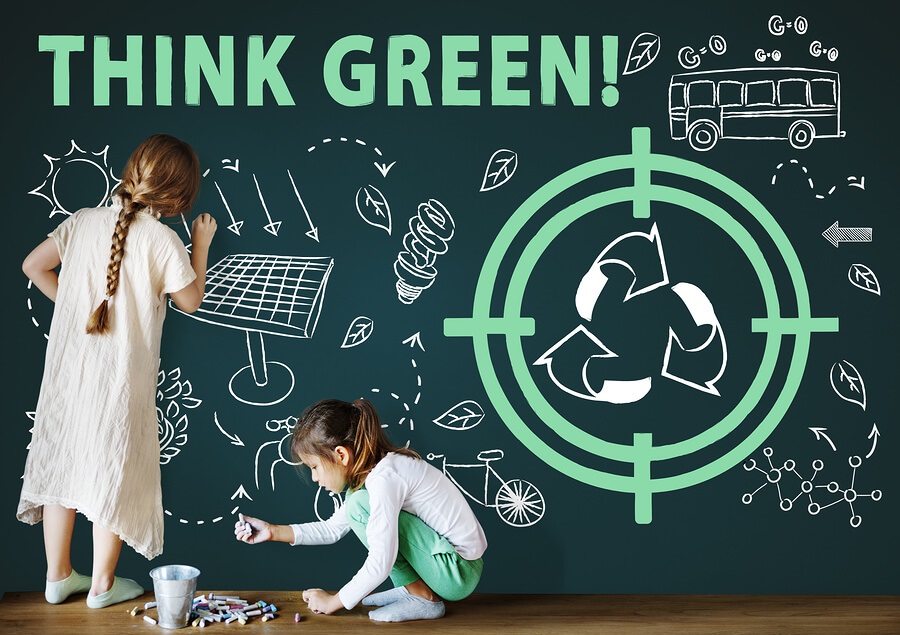
Collect Food for Composting
That apple core from lunch? Grape stem after snack? Egg shells after breakfast? Don’t throw them away! Teach your kids how composting adds to soil for a future veggie or flower garden that they can help plan. Keep a sealed container under your sink and instruct your kids what is/isn’t OK to compost. A great resource for composting guidelines is the US Environmental Protection Agency.
Recycle School Papers
Photo credit: Pixaby
It seems every day kids come home with worksheets and piles of assorted papers. After going through the work with your kids and confirming that they no longer need to keep them, take a paper shopping bag that’s too tattered to reuse and have your child put their papers in there to recycle. You can also have a designated bin for paper. Most town recycling takes paper, but many schools, churches and nonprofits have a bin specifically for paper recycling, like Abitibi Paper Retriever.
Conserve Water
Most kids don’t think twice about keeping the faucet running while brushing their teeth or playing with a hose in the yard. Talk to your kids about what a valuable resource water is, and brainstorm ideas that your whole family can do to help reduce your water waste.For example, try shortening your showers by setting a timer or bathing two little ones at once in the tub. Ask your kids what other ways they can conserve their water use — they’re bound to come up with some great ideas.
Make Saving Electricity a Game
Kids love a challenge, especially when you make it a fun one, and saving electricity is another way to go green while at home. Hand out a sticker every time one of your kids turn off the lights when leaving a room, or try having a night where you don’t use any electricity. Making your kids aware that energy is used each time they flip a switch or plug their electronic device in to be charged may make them realize how much electricity they use on a daily basis.
Use Cloth Instead of Paper Goods
Photo source: Flickr/eraphernalia_vintage
Another easy way to teach your kids to go green is to encourage the use of cloth instead of paper whenever possible. For example, make sure your bathroom is stocked with clean hand towels instead of paper towels. Same for wiping up messes — having a cloth handy instead of paper goods gives kids the signal that they are preventing another item from entering a landfill. Our family uses cloth napkins at every meal and we just toss them in with our regular laundry.
Do a Neighborhood Cleanup
via GIPHY
Take a walk with your kids down your street with a bag and collect any trash you come across. (Make sure to wear rubber gloves!)Turn it into a scavenger hunt by finding as many pieces of trash or bottles as possible. Many families choose Earth Day to do this type of project, but you can do it as often as you like.
Shop at Thrift Stores
Photo credit: Pixaby
Kids love toys and new things. Instead of going to a regular store, try shopping at your local thrift store for toys, books, and clothing. Our kids love finding treasures and it shows them what awesome finds there are in such places. We’ve found amazing books, clothing, and toys that were practically new but a fraction of the original cost!
Do a Scavenger Hunt While Shopping
While walking through the supermarket, ask your kids which products have the least amount of packaging. This is a fun and interesting way to help them see that a bag of pretzels is a greener choice than a box of pretzels with a bag inside of the box. Let your kids help choose the items they think have the least packaging, purchase them, and then recycle every part of the product when finished.





